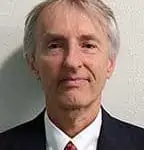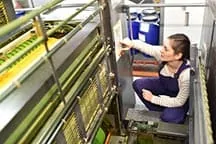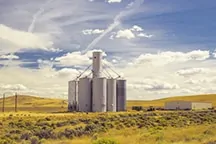

Hydrogen is commonly produced using steam methane reforming (SMR), which requires heat, a catalyst, and feedstock such as natural gas. SMR operations generate atmospheric emissions from combustion and process vents which may require air permitting. Air permitting can be a complicated process that delays facility construction and project start-up.
Comprehensive feasibility studies include phases to facilitate pre-application meetings and submission of a complete air permit application in a timely, cost-effective manner. Based on our case studies, SCS suggests a four-phase approach.
Phase 1: Preparation and Due Diligence
To begin the evaluation, your engineer compiles all available project information, such as plot plans, process flow diagrams, equipment lists with specifications, zoning, grading, and utilities. Since project specifications are subject to change, your engineer must remain flexible and iterative in their analysis approach as new data becomes available.
Phase 2: Emissions Analysis
The next phase is to calculate the project’s potential to emit criteria pollutants and greenhouse gases (GHGs). The calculation assesses potential requirements for Best Available Control Technology (BACT), emission offsets, Title V, and climate change mitigation. Always use an engineering firm with expertise in GHG emissions inventories and third-party verification of GHG emission inventories and reduction credits. Here’s why, based on the analysis, your engineer will be looking for these factors to smooth the application process:
Project emissions complied with BACT limits based upon a comparison to other permitted SMR facilities.
Project emissions that require the purchase of carbon credits on an ongoing basis to comply with Cap and Trade regulations.
Project emissions that do not trigger the need for emission offsets or Title V.
Phase 3: Regulatory Review
Conducting a regulatory review will identify potential requirements from local regulations such as California’s South Coast Air Quality Management District (SCAQMD). Using SCAQMD as an example, the project must comply with the additional rules.
Phase 4: Results and Conclusions
The comprehensive feasibility study summarizes the potential air quality permitting thresholds, requirements, costs, and schedule for your project. It includes all conclusions and supporting data for decision-making. With a comprehensive study in hand, your project is more sustainable, and you have valuable answers during discussions leading to obtaining a complete air permit.
SCS has over 50 years of environmental experience and trusted working relations with regulatory agencies. Many local, state, and federal agencies attend our free webinars, and industry associations request our input and insight when agencies are planning new rules. We serve as expert witnesses. If you’d like to learn more about developing air permitting strategies and applications, visit our website or contact us at .

Recently the state of Wisconsin released its updated 2020-2021 statewide waste characterization study. The study found that the broad organics category, including yard waste and diapers, accounted for about 1.3 million tons. An estimated 924,900 tons of paper, including cardboard, compostable and office paper, comprised about 21 percent of the landfills’ tonnage. That was followed by plastic at about 17 percent or 745,600 tons.
You can read the study, but why do local governments, states, and waste management businesses request these studies? Because waste and landfills are expensive to manage. Diverting waste from landfills cuts greenhouse gases and supplies materials for reuse as new products or compost – a more sustainable system.
Waste characterization information is designed for solid waste planning; however, anyone interested in the characteristics of the solid waste stream may find it useful. Studies can also target specific waste or needs such as construction and demolition waste and business waste generators. A generator means a person, specific location, or business that creates waste.
These studies help start answering questions such as:
States, jurisdictions, citizens, and businesses can use this information as a planning tool to help meet state mandates and their goals to reduce waste and achieve the benefits of sustainable practices. Kudos to Wisconsin, Iowa, and California, several of the many states moving toward more circular waste management!
The EPA’s published clarifications, technical revisions, and new rule versions for the National Emission Standards for Hazardous Air Pollutants (NESHAP) and New Source Performance Standards (NSPS) for MSW landfills may feel like alphabet soup right now.
SCS Engineers’ upcoming webinar and open Q/A forum on July 15, 2021, at 1:30 Eastern Time is free and could help keep you informed and on track for compliance by September 27, 2021.
Our panelists will advise on the essential key information, deadlines, and changes to field operations to address during the transition from the old to the new NESHAP and NSPS rules.
• Surface emissions monitoring;
• Wellhead monitoring and corrective action requirements;
• Delegation of authority to the state, local, or tribal agencies for emission standards;
• Applicability of the General Provisions under 40 CFR 63, Subpart A to affected landfills;
• Monitoring data for control devices during startup, shutdown, and malfunctions (SSM);
• Gas collection and control system installation;
• Compliance timing and reporting;
• Open question and answer throughout the webinar.
The EPA’s published clarifications, technical revisions, and new rule versions for the National Emission Standards for Hazardous Air Pollutants (NESHAP) and New Source Performance Standards (NSPS) for MSW landfills may feel like alphabet soup right now.
SCS Engineers’ upcoming webinar and open Q/A forum on July 15, 2021, at 1:30 Eastern is free and could help keep you informed and on track for compliance by September 27, 2021.
Our panelists will advise on the essential key information, deadlines, and changes to field operations to address during the transition from the old to the new NESHAP and NSPS rules.
• Surface emissions monitoring;
• Wellhead monitoring and corrective action requirements;
• Delegation of authority to the state, local, or tribal agencies for emission standards;
• Applicability of the General Provisions under 40 CFR 63, Subpart A to affected landfills;
• Monitoring data for control devices during startup, shutdown, and malfunctions (SSM);
• Gas collection and control system installation;
• Compliance timing and reporting;
• Open question and answer throughout the webinar.
Stephanie Taylor’s outstanding work recently earned her the prestigious Air & Waste Management Association’s 2021 Young Professional Award. As an SCS Engineers Environmental Professional, Stephanie manages and supports numerous clients in the Midwest, providing valuable air compliance/permitting and groundwater compliance services. She is a respected colleague at SCS and frequently provides services to offices outside of her business unit as an air compliance/permitting specialist.
In her recent work, Stephanie provided air compliance/permit audit services to a private client completing a companywide multimedia audit. Her work took her to multiple industrial manufacturing plants nationwide. Her attention to detail is integral in identifying non-compliance and areas of improvement that her client implemented company-wide to improve operations and compliance with permit requirements.
Stephanie joined with Midwest AWMA board in 2016 and quickly accepted the challenges of leadership, becoming Vice Chair in 2018 and as Chair for the Midwest Section in 2019 and 2020. In both positions, she was responsible for managing/coordinating the annual Midwest AWMA conference, a big job. She continues to serve the Midwest AWMA Chapter in a leadership role.
Stephanie has been the lead for the Young Professionals (YP) group in the SCS Kansas City office for several years. Her responsibilities include coordinating YP networking events and coordinating with the corporate YP group to support and mentor new YPs entering the workforce.
Tia Jeter, Stephanie’s manager says,
I have full confidence in Stephanie and her abilities and do not hesitate to let her take the lead on projects as I know the work quality she produces. She is a dedicated and key member of our SCS team. She is technically very strong and dependable, and co-workers know she will get the job done and stay on top of the client’s needs. She has done a great job getting involved with both SCS groups, the YP association, and the AWMA board.
Ann O’Brien helps industrial and agricultural companies stay abreast of the regulatory information necessary to remain compliant with federal and state policies. Ann’s most recent series of articles for businesses in the printing or agricultural industries provides advice on air permits and the need for addressing the limits on visible emissions likely specified in their air permits.
Here’s what you need to know about what visible emissions are, how they’re regulated, and how to stay in compliance with your air permit. For other industries, please feel free to contact any SCS office or email us at service.scsengineers.com. We provide our professional services nationwide.


This paper, presented at A&WMA’s 111th Annual Conference details the Tier 4 process and the potential issues that have arisen from conducting a Tier 4. This paper also assesses potential Tier 4 sites, exceedance reporting, wind monitoring, additional SEM equipment requirements, penetration monitoring, notification and reporting requirements, and impacts on solid waste landfills that will use the Tier 4 SEM procedure for delaying GCCS requirements. This paper reviews the changes between the draft NSPS and the final version of the new NSPS that was promulgated.
Click to read or share the paper, and learn about the authors.
This article discusses global air quality and how the collaboration between policy-makers and the scientific community can have a continued positive impact on air quality in the U.S. This collaboration has been the primary cause for the improvements observed in air quality over the past few decades.
U.S. Environmental Protection Agency (EPA) programs, such as the New Source Performance Standards (NSPS), New Source Review, and Maximum Achievable Control Technology standards, have all had a significant impact on improving air quality by lowering the ambient concentrations of NOX, VOC, CO, SOX, and PM.
Some areas, such as southern California, have committed to working toward electrifying the transportation network, implementing more stringent standards on diesel fuel sulfur content, and encouraging heavier utilization of public transportation.
Author: SCS Engineers’ Ryan Christman, M.S., is an air quality engineer and environmental management information systems specialist with experience in the oil and gas industry and the solid waste industry. He is just one of SCS’s outstanding Young Professionals.
Article in Waste360: explains who’s impacted and how to begin managing the costs.
SCS Technical Bulletin: a digest of hundreds of EPA regulatory policy into the information and timelines to act on now.
Article: strategic financial planning to support infrastructure costs.
Call our compliance specialists – find the office nearest you or email us at
“This program directly supports the county’s Roadmap to a Sustainable Waste Management Future by helping businesses to implement recycling programs,” says Leonard. “And not only recycling but waste reduction, as well, all of which, of course, contribute to reducing greenhouse gas emissions, resource management and sustainable materials management.”
Read the article about L.A. County’s Plan for Sustainable Waste Management